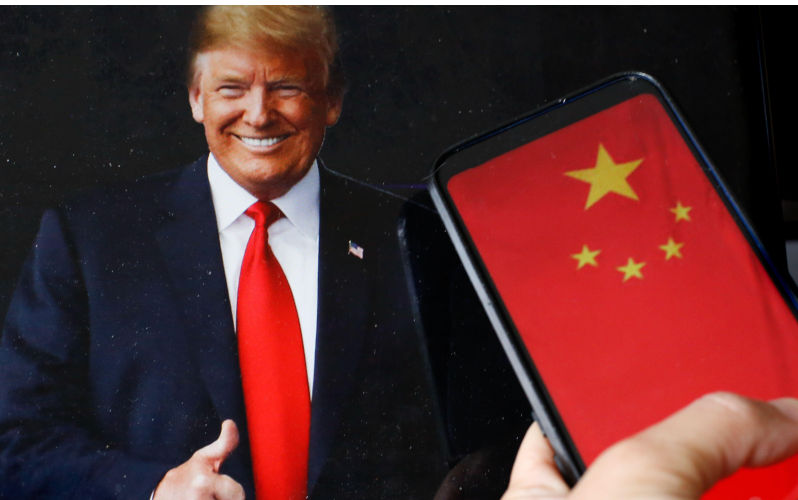How Trump’s vision of a single-minded China containment has failed
August 1, 2025
Instead of disengaging to focus on China, Trump’s America is more deeply involved in Europe’s defence and the Middle East than before.
Half a year into Donald Trump’s second US presidency, a stark reality confronts Washington: the grand vision of an unprecedented focus on countering China, heralded by his strategists and supporters, has faltered.
The fundamental premise that America could dramatically disengage from Europe and the Middle East, freeing up resources for a singular containment strategy against Beijing, has collided against a resistant world. Instead of pivoting to pursue China, Trump finds himself owning the very conflicts he vowed to end, draining American power and granting Beijing breathing room.
Resolving the Ukraine war swiftly was a core pillar. As a presidential candidate, Trump boasted he could end the conflict “in 24 hours”, later revising that to weeks. Six months since he took office, Trump stands not as a peacemaker, but as a reluctant wartime supplier. His initial threats to abandon Ukraine, aimed at forcing European capitulation or Kyiv’s concessions to Moscow, were met with fierce domestic and NATO resistance.
Facing bipartisan Congressional pressure and the spectre of a Russian breakthrough, the administration has reversed course. Far from ending the war, Trump now presides over an escalated American commitment, authorising more weapons transfers and military support. The war he promised to stop is now unequivocally his war. This pivot underscores the first fracture: strategic disengagement from Europe proved illusory, with the relationship instead demanding greater attention and resources.
The Middle East offered an equally brutal rebuke. Trump pledged to bring peace. Not only does the Gaza conflict persist but his administration has launched strikes against Iran, framed as a blow against its nuclear program. Yet Iran’s nuclear ambitions continue undeterred and Tehran has made no promise to cease uranium enrichment. The strikes have only inflamed tensions, strengthening Iran’s hardliners and potentially accelerating its weapons programs.
Instead of extricating America to focus eastward, Trump compounded its entanglement. The volatile region now demands constant vigilance, diverting military assets and diplomatic bandwidth – another drain on US strategic reserves.
This dual failure to disengage from Europe and the Middle East cripples the China strategy’s foundation. The precondition — freeing national strength — never materialised. Washington now fights costly holding actions on two fronts. While efforts continue to tighten pressure on China — accelerating the military posture in US allies Japan and South Korea, pushing integration of the Quadrilateral Security Dialogue, and advancing AUKUS and the so-called Squad — the reality is dilution.
Diplomats and planners are stretched thinner. Defence budgets strain under demands from Europe and the Middle East. Managing multiple crises blunts focus on the Pacific. This diversion hands China invaluable strategic time and space. Freed from America’s pressure, Beijing can bolster its technological base, solidify economic ties, refine military capabilities and exploit global instability. It watches as its principal rival becomes increasingly overstretched.
Compounding this, Trump’s confrontational trade and tech policies have also faltered. Aggressive trade tools are yielding diminishing returns, hurting America while hardening China’s drive for resilient supply chains. The tech blockade triggered Chinese retaliation in limiting rare earth exports — elements crucial to the hi-tech and defence sectors — to the US. After six months of maximalist rhetoric, the administration appears chastened.
Reports of quiet diplomatic feelers and preparations for a potential Xi-Trump summit signal an emerging realism: unilateral coercion has hit its limits. Negotiations are being scheduled regularly. Crucially, these included talks in Sweden where the US urged China to curb purchases of Russian and Iranian oil, underscoring Washington’s inability to disentangle from the very conflicts it hoped to avoid.
By asking Beijing to help isolate Moscow and Tehran, the US not only admits its Middle East and European distractions require Chinese leverage to resolve, but also hands Beijing a diplomatic veto. China has signalled a rejection of such demands, affirming its sovereign right to pursue energy partnerships.
This US shift towards a potential compromise in the economic and technological domains reveals a tactical retreat forced by the complexities of interdependence and mutually assured economic destruction.
Finally, the hope of fracturing the Russia-China axis lies in ruins. Trump’s initial ambivalence towards Russian President Vladimir Putin yielded nothing on Ukraine. Moscow, entrenched in its partnership and benefitting hugely from China as an economic lifeline, shows no inclination of breaking that bond. The strategic bet on fracturing the Russia-China relationship has failed. Consequently, Washington faces not a distracted China, but one potentially strengthened by a resilient alignment.
Recent reports revealing Beijing does not want to see Russia lose in Ukraine — fearing a full US pivot to Asia should the conflict end — only underscore how the prolonging of these distant conflicts serves China’s core interest in maintaining American distraction. This failed wedge eliminates another short cut to containment.
Xi Jinping says China, Russia have ‘special responsibility’ to stand up to power politics
After six months, the strategic landscape diverges profoundly from the Trump administration’s vision. The re-pivot to Asia stumbled over Europe and the Middle East. The economic war inflicted more pain than progress, pushing leaders towards talks. America’s military and diplomatic apparatus, far from focused on the Pacific, is dispersed globally, firefighting crises of its own making.
Whatever his next steps, Trump now owns the Ukraine war, the volatile post-strike Middle East and the demands of managing fractious alliances. Critically, he does not own the strategic initiative against China. Beijing, navigating these turbulent waters, watches its primary adversary struggle with self-inflicted complications.
Each day America is mired elsewhere grants China more time to build strength, deepen partnerships and manoeuvre. The result is not a focused America relentlessly pursuing China containment, but an overextended superpower gifting its rival the one thing it needs most: strategic room to breathe.
Republished from South China Morning Post, 31 July 2025
The views expressed in this article may or may not reflect those of Pearls and Irritations.
